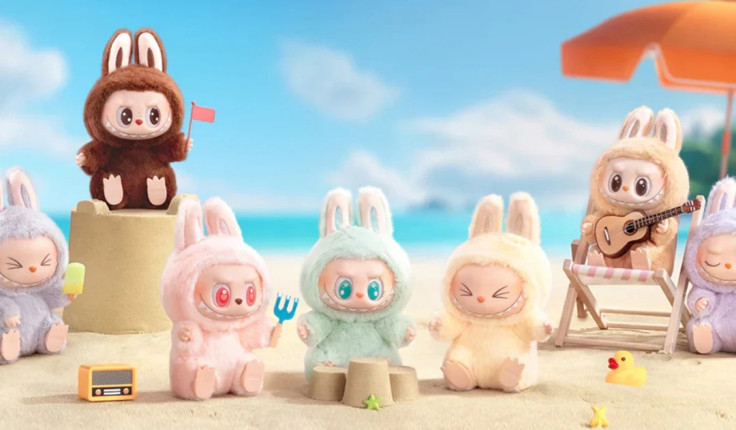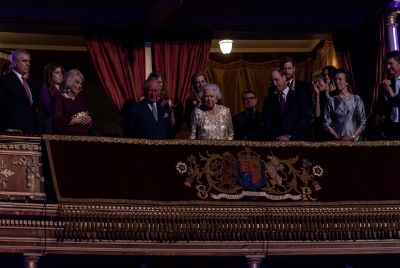Fake Labubu Dolls Flood UK Market as Experts Share Tips on How to Spot One
Trading Standards teams have already seized thousands of these unsafe dolls

The magical, mischievous world of Labubu — the quirky, fang-toothed 'monster elf' beloved by collectors — has been tainted by a wave of counterfeits sweeping the UK.
Trading Standards officers have warned that these convincing fakes are not only undermining the value of genuine collections but also posing serious risks to children.
As the line between genuine and fraudulent becomes increasingly blurred, experts are sharing tips on how to spot a counterfeit and protect your collection.
A severe warning has been issued by the Chartered Trading Standards Institute (CTSI) regarding the rising sale of counterfeit 'Labubu' dolls across the UK.
Seizing the Fakes: A Nationwide Crackdown
These viral plush toys — the quirky, fang-toothed 'monster elf' characters from Chinese toymaker Pop Mart — have turned into a worldwide collector's sensation. Their skyrocketing popularity has led to an increase in fake versions, with many being sold illegally by third-party sellers on online marketplaces and in local shops.
Trading Standards warn of potentially dangerous, counterfeit Labubu dolls on sale in North Lanarkshire and online.
— NorthLanCouncil (@nlcpeople) July 3, 2025
They've received complaints about dolls coming apart, creating a choking hazard.
Concerned about toys you’ve bought? Call Advice Direct Scotland on 0808 164 6000. pic.twitter.com/6cPB3kWcGb
In recent weeks, Trading Standards teams have confiscated thousands of hazardous fake Labubu dolls. Within just one month, more than 2,000 were seized from 13 retailers in North Tyneside, followed by further confiscations in Greater Manchester, Humberside, North Somerset, and Scotland. Many of these discoveries were the result of concerned parents providing information.
A Dangerous Dupe: The Hidden Risks of Counterfeit Toys
Counterfeit Labubu dolls are often poorly made and can be pretty dangerous. Many have small parts that can easily detach, such as their eyes, hands, and feet, which pose a serious choking risk to children. The dolls' loose stitching and exposed stuffing also increase the danger of suffocation.
Counterfeit dolls frequently violate the UK's Toys (Safety) Regulations 2011, as they lack the mandatory CE or UKCA safety markings, importer information, and necessary safety warnings. Since they haven't undergone proper safety checks, these toys may also contain hazardous substances such as lead, harmful dyes, or banned plasticisers.
Know Your Labubu: How to Spot a Genuine Doll
Genuine Pop Mart Labubu dolls feature a unique elf-like appearance and come with several distinguishing characteristics to confirm their authenticity. These include a holographic POP MART sticker, a QR code that links to the official website when scanned, and a subtle UV stamp on one foot of newer dolls.
You can spot a fake by its overly bright colours or the wrong number of teeth, as real Labubus always have nine. These authenticity markers are often either missing or badly copied on counterfeit dolls.
Experts Speak Out: The Battle Against Counterfeit Goods
CTSI's Kerry Nicol warned that the high demand for Labubu dolls, driven by social media, has made genuine products hard to find. This has opened the door for 'dangerous counterfeits' to enter the market, often sold by third-party sellers who disregard safety.
Nicol emphasised that these fakes bypass 'rigorous safety checks,' potentially containing choking hazards or toxic materials that put children at serious risk. She added that everyone in the supply chain should play a role in preventing unsafe toys from reaching children.
Christine Heemskerk, CTSI's Lead Officer for Product Safety, warned that fake dolls are often made in unsafe factories without proper safety standards. She noted that counterfeit Labubus could contain hazardous chemicals that may cause 'lifetime damage to a child's organs,' and small parts like eyes can easily detach, posing a serious choking risk. Heemskerk urged consumers to 'beware of putting your child at risk by buying cheap, unsafe fakes.'
Jerry Burnie, Head of Toy Safety at the BTHA, stated that counterfeit toys are a 'significant risk' because they are unlikely to meet strict safety standards. He recommended that when shopping for branded toys, consumers should research the brand and purchase directly from the company or a reputable retailer.
Burnie also advised that when buying from an online marketplace, consumers should include the toy company's name in their search and compare the listing to the official company website.
How to Spot a Fake Labubu Doll
To protect yourself from counterfeit Labubu dolls, the CTSI offers the following advice:
- Examine the packaging: Look for a UKCA or CE safety mark, importer details, and clear warnings.
- Check for authenticity markers: Genuine dolls have a holographic sticker and a scannable QR code. Newer editions also feature a UV stamp on one of the feet.
- Inspect the doll's appearance: Be wary of overly bright colours, poor stitching, or the wrong number of teeth—authentic Labubus have nine.
- Be careful of 'bargains': Counterfeit toys are often sold at lower prices but can pose serious risks, from choking hazards to toxic materials.
- Buy from trusted sources: Stick to reputable retailers and avoid unfamiliar sellers, especially on online marketplaces.
The CTSI is focusing on counterfeit goods as part of a broader campaign, since the production and sale of these items are frequently connected to larger organised crime networks.
The Bigger Picture
The CTSI warns that counterfeit goods often tie into wider organised crime, funding illicit networks. Its current campaign is targeting fake toys as part of a broader mission to keep unsafe products out of UK homes.
For collectors and parents alike, vigilance is key: a genuine Labubu may cost more, but it comes without the hidden dangers of a dangerous dupe.
© Copyright IBTimes 2025. All rights reserved.






















